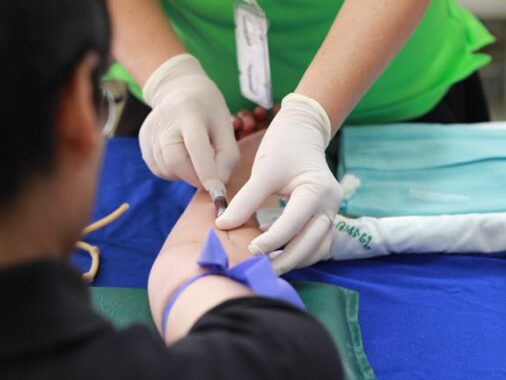Hyperpigmentation, characterised by the darkening of certain areas of the skin, is a common dermatological concern. While it can affect various parts of the body, one area that often garners attention is the underarms. Dark armpits can be a source of self-consciousness, but the good news is that effective dark armpit treatments are available. In this comprehensive guide, we’ll delve into the causes, types, and treatment options for dark armpits, helping you achieve brighter and more confident underarms.
I. Understanding Hyperpigmentation:
Before we discuss dark armpit treatment, it’s essential to grasp the concept of hyperpigmentation. Hyperpigmentation occurs when the skin produces excess melanin, the pigment responsible for skin, hair, and eye color. This overproduction leads to dark patches or spots on the skin. Various factors can trigger hyperpigmentation, such as:
- Sun Exposure: Prolonged sun exposure stimulates melanin production and can lead to darkened skin.
- Hormonal Changes: Hormonal fluctuations, as seen during pregnancy or due to conditions like polycystic ovary syndrome (PCOS), can influence melanin production.
- Friction and Irritation: Continuous friction from clothing, particularly tight or rough fabrics, or frequent shaving can result in skin darkening.
- Deodorants and Antiperspirants: Certain deodorants or antiperspirants may contain ingredients that react with sweat, causing discoloration.
- Genetics: Your genetic makeup can influence your predisposition to hyperpigmentation.
II. Types of Hyperpigmentation:
Hyperpigmentation can manifest in several ways. When it affects the armpits, it typically falls into one of the following categories:
- Post-Inflammatory Hyperpigmentation (PIH): This type of hyperpigmentation is often a result of skin trauma, such as shaving or waxing. It leads to darkening as the skin heals after injury or irritation.
- Acanthosis Nigricans: Acanthosis nigricans is a condition characterised by the development of dark, thickened patches of skin. It can occur in the armpits and is often associated with obesity or insulin resistance.
- Excessive Sun Exposure: Prolonged sun exposure without proper protection can lead to sun-induced hyperpigmentation in the underarms.
III. Safe and Effective Armpit Whitening Treatment:
Now, let’s explore safe and effective methods for dark armpit treatment:
1. Gentle Cleansing:
Method: Use a mild, hypoallergenic soap or cleanser to clean your armpits daily. Avoid harsh soaps and vigorous scrubbing, as they can irritate the skin and worsen pigmentation.
2. Exfoliation:
Method: Gently exfoliate your armpits 1-2 times a week with a soft loofah or a mild exfoliating scrub specifically designed for sensitive areas. This helps remove dead skin cells and can gradually improve discoloration.
3. Hair Removal Methods:
Method: Avoid harsh hair removal methods such as waxing or depilatory creams, as they can cause irritation and darkening. Consider alternative methods like shaving or using hair removal creams specifically designed for sensitive areas.
4. Avoid Tight Clothing:
Method: Tight clothing can cause friction and contribute to darkening. Wear loose-fitting clothes to reduce irritation.
5. Skin Lightening Products:
Method: Some over-the-counter skin lightening products containing ingredients like niacinamide, alpha hydroxy acids (AHAs), or kojic acid may help lighten dark armpits. However, use these products with caution and follow the instructions, as overuse can lead to skin irritation.
6. Moisturise:
Method: Apply a fragrance-free, hypoallergenic moisturiser to keep your skin hydrated. Dry skin can exacerbate darkening.
7. Natural Remedies:
Method: Some people find natural remedies like aloe vera, cucumber slices, or potato slices applied to the armpits can help whiten dark armpits. These are gentle options but may take time to show results.
8. Sun Protection:
Method: Use sunscreen on your armpits if they are exposed to the sun. UV rays can worsen hyperpigmentation.
9. Medical Treatments:
Method: In some cases, medical treatments may be necessary, such as chemical peels, microdermabrasion, or laser therapy. Consult a dermatologist to discuss these options.
10. Avoid Irritating Products:
Method: Be cautious with deodorants and antiperspirants that contain alcohol, fragrances, or harsh chemicals, as they can cause irritation. Opt for hypoallergenic, fragrance-free options.
11. Maintain Good Hygiene:
Method: Proper hygiene is essential. Keep your armpits clean and dry to prevent further darkening due to sweat and friction.
12. Patience and Consistency:
Method: Improvement in skin pigmentation can take time, and results may vary from person to person. It’s essential to be patient and consistent with your chosen treatment.
IV. Consult a Dermatologist:
If dark armpits persist or worsen despite these efforts, it’s advisable to consult a dermatologist. A dermatologist can provide a professional evaluation, diagnose any underlying issues, and offer personalised treatment options to address persistent pigmentation concerns.
In conclusion, achieving armpit whitening is possible with a combination of gentle care, proper hygiene, and targeted treatments. By following these safe and effective methods, you can work toward achieving lighter and more even-toned underarms, regardless of your skin type.






